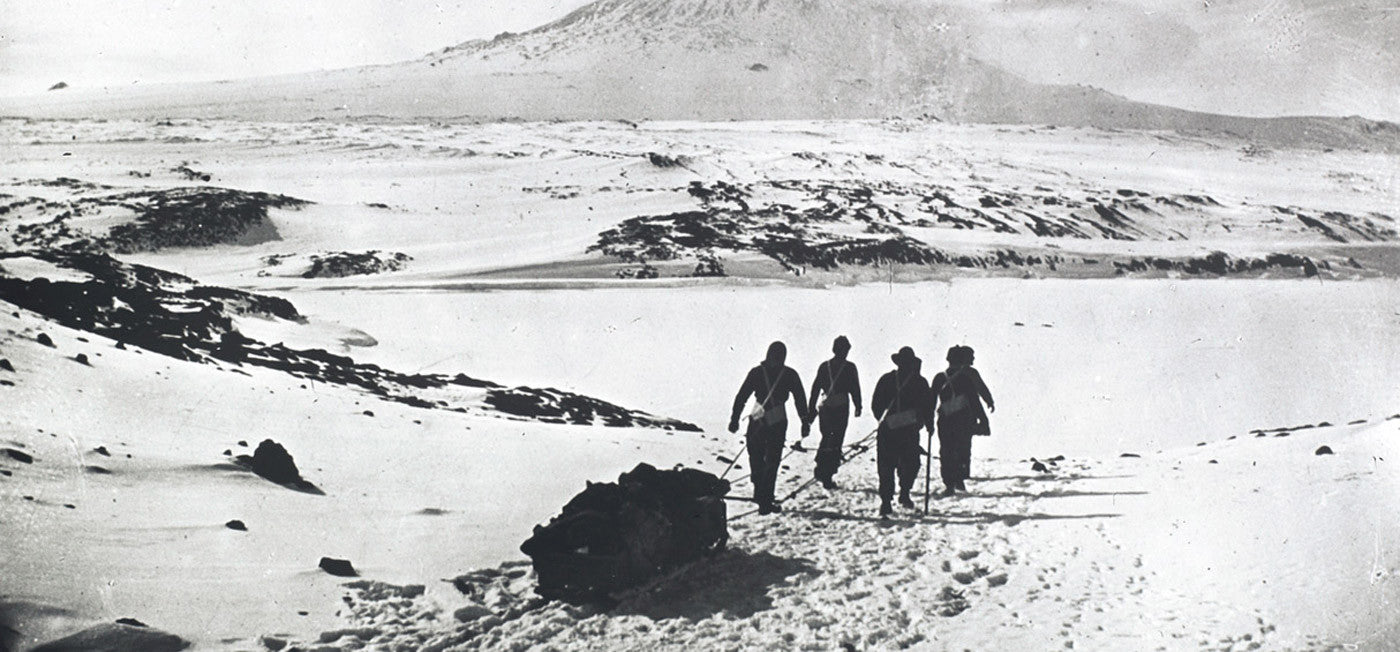
The Expedition Food Swing
Despite a growing demand for nutritious and healthy food in our daily lives, bland and artificial freeze-dried meals remain a popular choice amongst explorers. Olivia Lee reports on the expedition food swing.
When I’m far away from home, pushing my physical boundaries, I want my food to be satisfying. I’m not alone in this. NASA astronaut John Young smuggled a corned beef sandwich into space in 1965. Ernest Shackleton’s team packed over 700 kilograms of the ‘finest York hams’ on their expedition through Antarctica in 1907. I’ve never had a national government or team of sherpas to support my more modest hiking ambitions, but I still have high expectations for a good meal in the wild.
Perhaps it is the result of my childhood experience. Struggling through Duke of Edinburgh expeditions, I used to hate the freeze-dried meals my mother would buy. I loathed the taste and texture. I remember sitting at the top of Haytor in Dartmoor, forcing down a freeze-dried bolognese, the pasta still crunchy, oil floating on the top. As an adult, I can appreciate the convenience of expedition food — how it’s lightweight, quick to cook and never seems to spoil. But as I rediscover the British outdoors again, years on from my school days, I want freeze-dried food that reflects the trend at play in my fridge back home: food that not only tastes good, but is healthy, nutritious and keeps me looking forward to my next adventure.
The evolution of freeze-drying has been a slow process. The technique can be dated as far back as 1250 BC, to the Inuits who dried their fish in the Arctic using dehydration. The Incas, too, sliced potatoes and left them on top of the mountains overnight to freeze, removing the ice crystals each morning until they were completely dry and the poison in the raw potato had bled out of the skin. While people started to tinker with the concept of freeze-drying in the late 1800s, there wasn’t widespread use until the forties — jumpstarted by the needs of the Second World War, when we required food that would last for the armed forces.
Throughout the sixties, this kind of food grew in popularity, particularly with the US space programme. Every manned mission launched by NASA carried freeze-dried food. In fact, the first meal eaten on the moon, by Neil Armstrong and Buzz Aldrin, included freeze-dried bacon squares. By the late sixties, freeze-drying had moved into the commercial market, where food is quickly frozen to temperatures of minus 40, then 98 per cent of the water (or technically ice) is drawn out under a vacuum.
Backpacker magazine said in 1989 that, “For most people, freeze-dried food remains the product of arcane wizardry.” Today, this kind of food has lost its magic. The same techniques from four decades ago are still largely being used to create freeze-dried food that is bland and innutritious. We only have to contrast the expedition food industry with the ready-meal industry. Both kicked off in the UK at similar times, but ready-meals now occupy whole aisles of the supermarkets, with meals ranging from low calorie to high-end to downright luxury, and sales fives times higher than they were back in the seventies.
It’s clear freeze-dried food still has a long way to go. But then perhaps consumers must bear some responsibility for this lack of development. Many expeditioners are willing to make compromises, because what freeze-dried food lacks in taste and nutrition, it gains in weight, calories and shelf life. And when you’re heading into the wild, these are the things usually deemed most important.
“I always choose food based on weight and calories,” says Tim Treloar, ultramarathon runner, mountaineer and founder of TTAdventures. “When you’re carrying it all on your back, every gram counts.” Treloar, like many athletes, removes his freeze-dried food from its original pouch and repackages it, because even those extra 20 grams (less than the weight of an AA battery) make a difference — especially when you’re consuming upwards of 7,000 calories a day. When competing in the 4 Deserts Sahara ultramarathon — a race through the desert equivalent to roughly six marathons in seven days, carrying everything you need to survive — Treloar had to force down 2,000 calories worth of porridge just for breakfast. “I can’t be choosy. I just need as many calories in as little weight as possible,” he says.
Pete Newland, an ex-soldier with the British Army, who has competed in both the Marathon Des Sables and Arctic 6633 Ultra, says one of the first things he looks for when deciding on food is how easily it will rehydrate. “You never want to have to wait around for a meal,” he says. “Freeze-dried food is good because it’s usually ready in ten minutes — you only have to add water.” He also needs meals to last, over long periods of time in ferocious climates, be they desert or polar. The usually perishable cottage cheese, for instance, can last up to 25 years once freeze-dried.
Ultimately, freeze-dried food has a lot going for it. And if demand is high, why change it? After all, as Treloar and Newland say, taste is the last thing on your mind when you’re battling through ultramarathons and up bitterly cold mountains.
But I think this view is a little outdated. Today, we are a society of foodies. We hail chefs as celebrities, dine out, make cooking and baking our hobbies, and post pictures of meals on Instagram as if they are works of art. We’re buying more cookbooks than ever before, and tuning in more to cookery shows. We’re willing to pay good money for quality. Even at typically ‘budget’ stores like Lidl, the supermarket’s ‘Deluxe’ range is growing: up by 65 per cent in a three-month period in 2016. Local butchers, greengrocers and farm shops, though typically pricier than the average supermarket, are on the rise, and ‘ethical’ produce sales, including organic, fair-trade and freerange, have grown year-on-year since 2007.
As our obsession for food grows, so too does our desire to eat well. Having a better understanding of nutrition has allowed us to make more informed choices about the kind of foods we want to buy. Purchases of white bread have dropped 75 per cent since 1974, according to the National Food Survey. Skimmed milk overtook whole-fat milk in the 1990s. Fresh fruit purchases have gone up by 50 per cent while soft drink purchases have dropped by a third.
In a society where food is so important, how can we still be settling for such poor expedition meals? You just need to look at a pack of freeze-dried Chilli con Carne to see how badly most meals shape up, with one example showing just 16 per cent beef, 14 per cent of the daily recommended carbohydrates and just 4 per cent of the daily recommended amount of salt. These figures are low for a regular dinner after a day in the office, let alone after climbing a mountain. Another example shows a Chilli con Carne flavoured with pineapple, E-numbers and palm oil. Hydrolyzed vegetable protein, often seen on the back of freeze-dried food packets, is a chemical used to restore taste but is also a source of the controversial MSG. If we demand quality in our regular lives, why not on the mountain too?
Many freeze-dried foods can also be difficult to rehydrate at the recommended water levels — another cause for concern in the wild. When they are partially rehydrated, they become difficult to swallow and can in turn dehydrate you further, leading to constipation among other problems. “After a couple of days of the stuff, it really becomes a chore to eat, both mentally and physically,” says utlramarathon competitor, Jamie Gaymer.
Above all, disappointment is freeze-dried food’s biggest sin. After a long day of walking, running or climbing, we deserve a good meal; it’s part of what makes us human. “I’ve found that morale really suffers when the food is bad,” says Ian McClelland, founder of Turnwild, an expedition outfit specialising in treks to Greenland. “There isn’t anything for people to look forward to.” Demet Güzey, author of Food on Foot: A History of Eating on Trails and in the Wild, echoes this. She says that with the majority of our expeditions today focused on winning the race or beating the mountain, we typically choose ‘tough’ food to reflect that ambition – food that we probably wouldn’t eat in our regular lives; high in calories and low in flavour. But her findings suggest that people are usually disappointed. She points to the Appalachian Trail in the US, which has several posts where people can leave food they no longer want for other hikers. There’s never anything nutritious or tasty left behind, just more bland, high-energy meals.
There is some good news, however, glimmering in the background. While the expedition food industry has a long way still to go, there are a few smaller companies trying to hit that sweet spot between practicality and luxury. I think we at Outdoorfood are one of those companies. We hand-cook our dehydrated food in a barn in Dorset, focussing specifically on taste. Our FIREPOT meals still offer all that adventures look for in terms of weight and calories, but use only natural ingredients to make food that is nutritious and delicious. To prove I’m not completely biased though, Norwegian-based Real Turmat are another good choice. They freeze-dry with a focus on flavour, making meals in which the meat tastes like real meat — no tiny bits of mince, but real stew-like chunks that rehydrate well. There are also two German companies: Gipfel Hafer, making handmade hot muesli and Lyofood, who pride themselves on the completely natural ingredients they use, much of which is grown in their own fields. These companies might cost a little more than the mainstream competitors, but if it helps put to bed those childhood memories of crunchy freeze-dried bolognese, I’d wager it’s a small price to pay.

